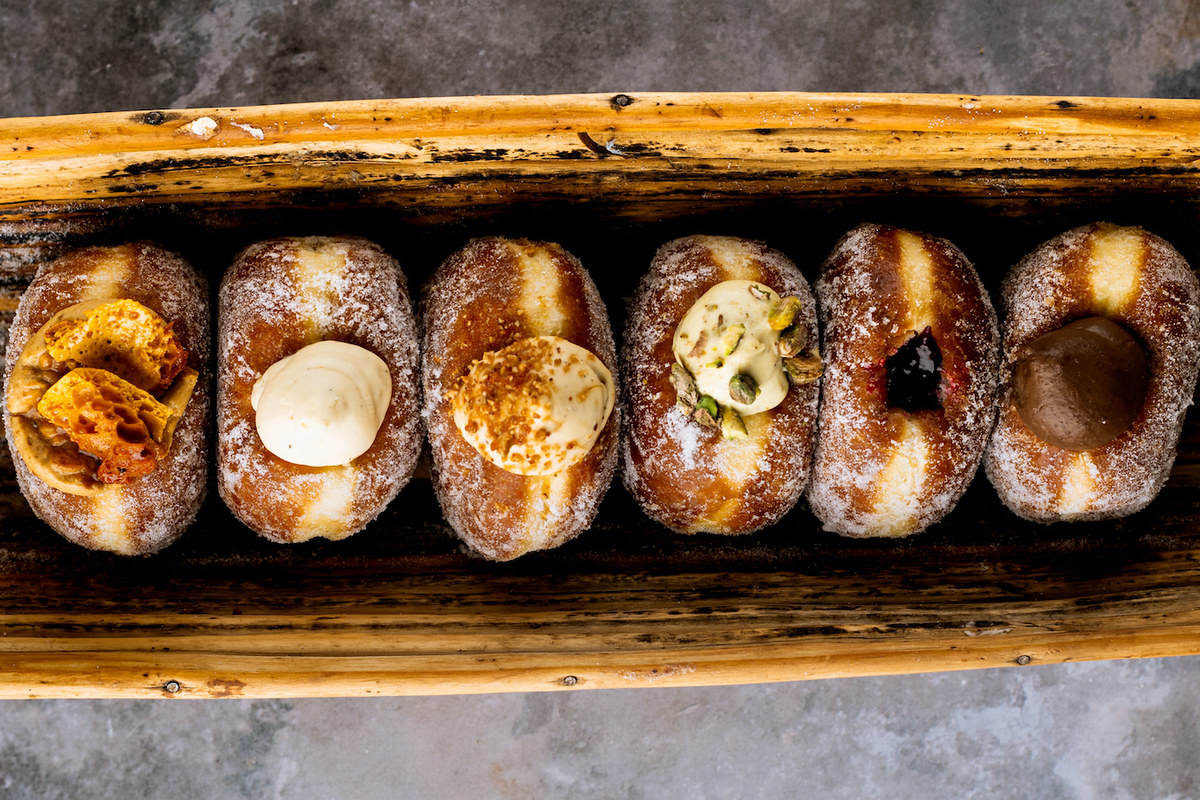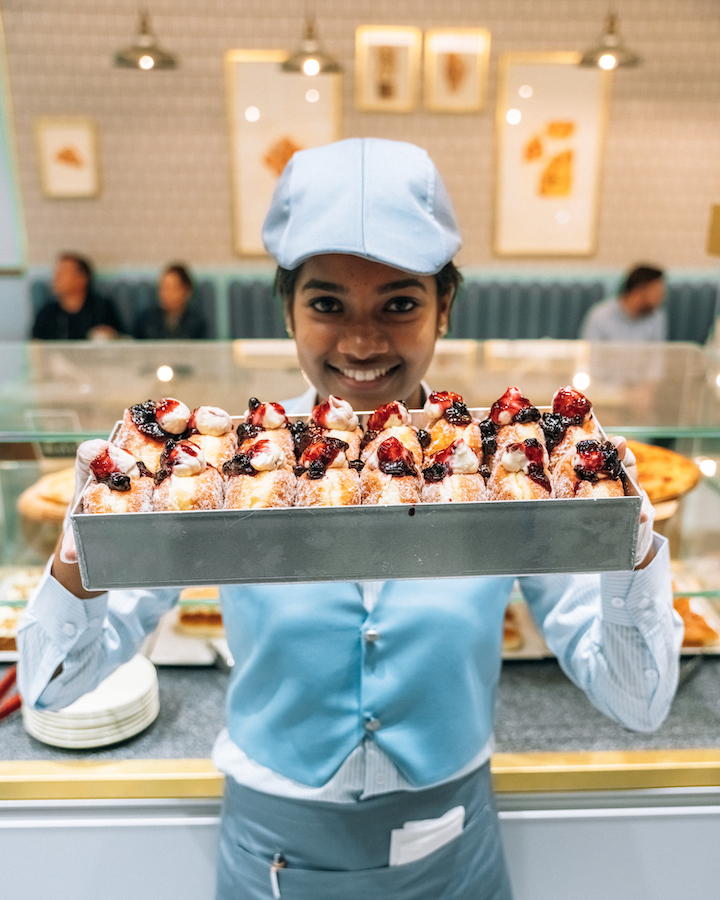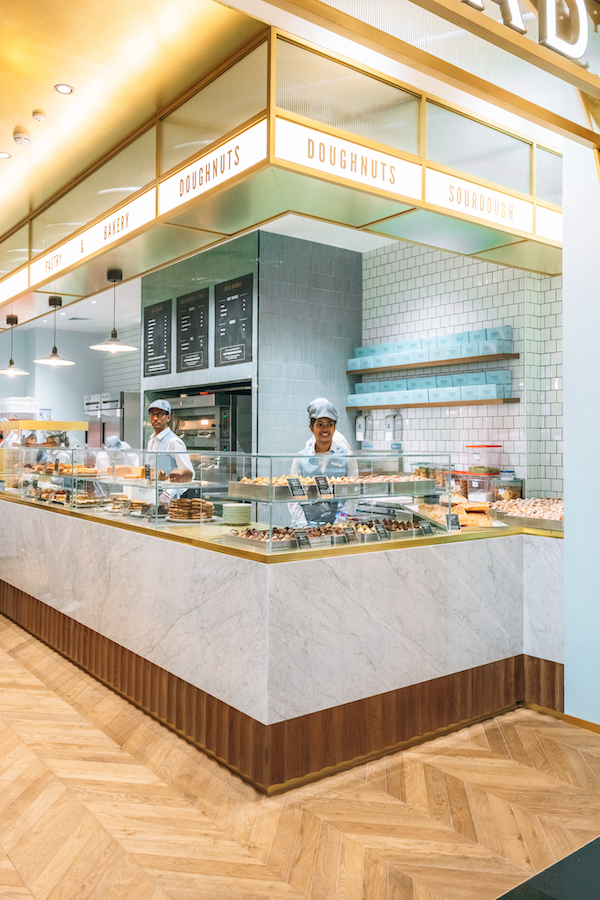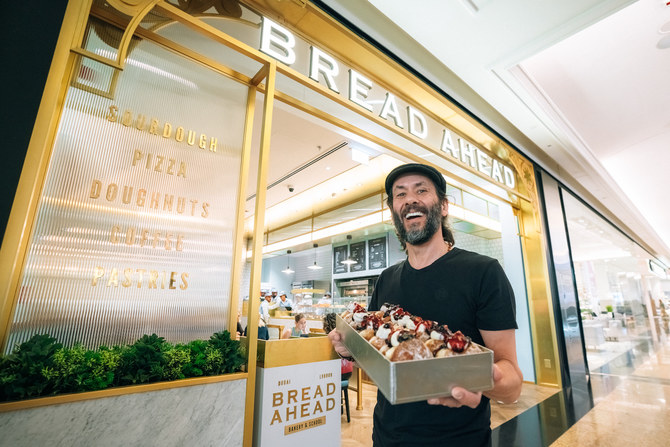DUBAI: Even as a child, Matthew Jones wanted to be a chef. “I never had any doubt in my mind about what I was going to do,” Jones tells Arab News. “I was in the kitchen literally as soon as I could walk. . . The kitchen is my home.”
Having spent 15 years working in Michelin-starred restaurants, the self-taught British baker founded Bread Ahead, a popular artisan bakery and school that opened 10 years ago in London’s bustling Borough Market. People still line up to get a hold of sourdough breads, pastries, and its main star, the donut.
“The donut scene was a bit tired at the time,” Jones says. “It was sort of focused on the sweetness, whereas we’re more about gastronomy and flavors. We make our own jams, caramels, all of the fillings. We make everything from scratch. . . It’s all about the eating journey — when it goes into your mouth and you start eating one of our donuts, it’s an emotional journey.”

Bread Ahead - doughnut selection. (Supplied)
The bakery is famed for its float donut, filled with vanilla, pistachio, chocolate, and praline and only fried on the surface of the oil. When it’s flipped over, there is a white steamed line at the center of the donut, which Jones calls “the band of truth” — a sign of a good donut. “The body of the donut must be very light, fluffy, and a little bit buttery,” he says. But it’s not just the tangible ingredients that make the donut, it’s how you work the dough. “You give something of yourself when you bake,” Jones adds.
Bread Ahead is a London institution, and it has now found its way to the Middle East — opening new branches last year in Jeddah and Dubai, most recently at Mall of the Emirates. “We just got a call one day and somebody said, ‘We want to take you out to the Middle East.’ It was great,” Jones says. “I love Dubai. It’s an amazing city — a city of opportunity, especially in hospitality and the food industry.”
Here, Jones discusses discipline in the kitchen and the challenges of working in the Michelin world, and shares a delicious cinnamon bun recipe.
Q: What’s your earliest food memory?
A: It would probably be making flapjacks, where I used to live with my parents in Quakers Hall Lane, Kent. I would have probably been about five or six years old. I was a happy little soul.

Blueberry Cheescake Doughnut. (Supplied)
When you started out as a professional, what was the most common mistake you made?
I think I was a good learner when I was a young chef. I worked in quite a brutal environment; I was brought up in the Michelin world in the Eighties and Nineties. So you weren’t really allowed much room for error.([Laughs.) You would just get barked at. But I was disciplined. I had a good work ethic.
What one ingredient can instantly improve any dish?
Truffles, caviar, saffron… (Laughs.) Generally, those high-end things do improve food. But let’s say… good company?
Are you a disciplinarian in the kitchen? Do you shout a lot? Or are you more laidback?
I would shout a lot, definitely, when I was a younger chef and baker. I was very full-on — direct, committed seven days a week, eighteen hours a day, no problem at all. I’ll do that all day long. There’s a lot to get right every day. More recently, I think I’ve sort of cooled down a bit.

The bakery is famed for its float donut, filled with vanilla, pistachio, chocolate, and praline and only fried on the surface of the oil. (Supplied)
What customer behavior most annoys you?
I think probably asking for gluten-free products when they’re not actually gluten-free. Allergens is a big one — I think people don’t really understand them a lot of the time. Obviously, I’m a perfectionist, so anybody who’s critical of food, I find that quite difficult to deal with. (Laughs.)
What’s your favorite dish to cook?
Maybe risotto. I love the process of it.
What’s your top tip for amateur chefs?
Keep doing it. Don’t give up. You know, I think it’s that 10,000-hour rule: You’ve got to put the hours in. You’re never going to make your best loaf of bread the first time you make it. It won’t happen, sadly. But even when it goes wrong, that’s okay. Just start again.
Chef Matthew’s cinnamon rolls

INGREDIENTS:
For the dough
50g rice flour; 450g strong bread flour, plus extra for dusting; 300g full fat milk; 80g caster sugar; 10g fresh yeast; 10g fine sea salt; 100g butter; 1/4 tspn ground cinnamon; 1 egg
For the cinnamon butter:
180g softened unsalted butter; 225g soft dark brown sugar; 75g soft light brown sugar; 20g ground cinnamon
INSTRUCTIONS:
1. Put all the dough ingredients apart from the butter in a bowl, tip onto table, and — using the heel of your hand — stretch and tear for five minutes.
2. Add the butter into your dough one third at a time, continuing to stretch and tear until the butter is absorbed. Stretch and tear the dough for five more minutes until it is elastic and glossy.
3. Return your dough to your clean mixing bowl, cover with cling film and place in the fridge for at least one hour.
4. Beat the cinnamon butter ingredients together in a bowl until combined.
5. Transfer the dough from the fridge onto a lightly floured work surface.
6. Using a rolling pin, roll the dough out into a rectangle, roughly 50cm x 40cm. Spread the filling evenly over the dough, leaving a small strip clear of any filling along one of the long edges, then brush this strip with a little water.
7. Roll the dough up lengthways, gently pressing the filling-free edge into the dough to seal it.
8. The roll into 12 equal pieces about 5cm thick.
9. Transfer them to a baking tray lined with baking paper. Gently press them down so they are about 4cm high. Cover with a tea towel. Leave to prove in a warm place for about 1 hour, until they have almost doubled in size.
10. Preheat your oven to 200°C/fan 180°C/gas 6. Bake the buns for 15 minutes, then turn the tray round and bake for a further 10 minutes, until golden brown.
11. Remove buns from oven, transfer to a wire rack, and eat warm.














